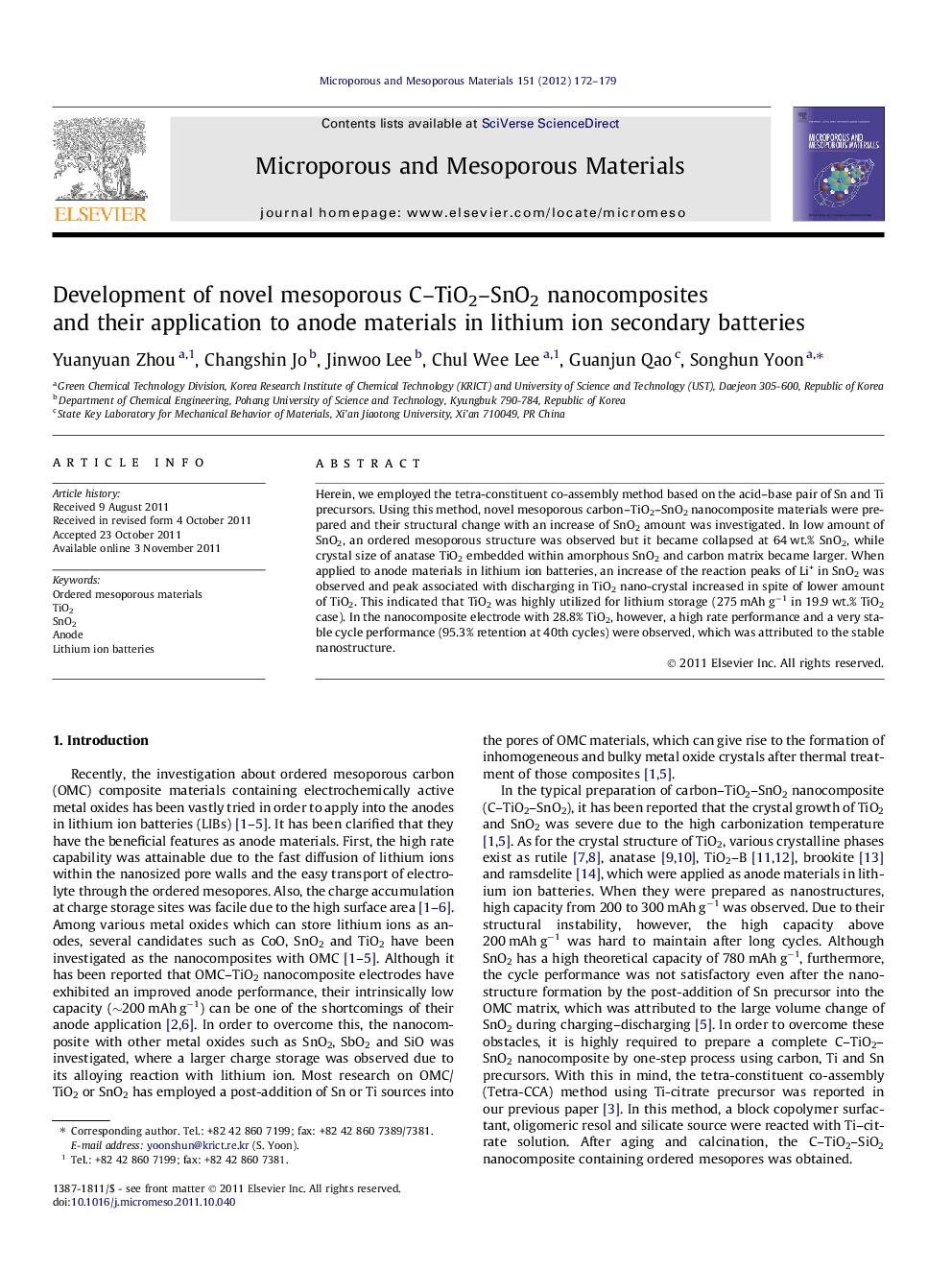| Article ID | Journal | Published Year | Pages | File Type |
|---|---|---|---|---|
| 74927 | Microporous and Mesoporous Materials | 2012 | 8 Pages |
Herein, we employed the tetra-constituent co-assembly method based on the acid–base pair of Sn and Ti precursors. Using this method, novel mesoporous carbon–TiO2–SnO2 nanocomposite materials were prepared and their structural change with an increase of SnO2 amount was investigated. In low amount of SnO2, an ordered mesoporous structure was observed but it became collapsed at 64 wt.% SnO2, while crystal size of anatase TiO2 embedded within amorphous SnO2 and carbon matrix became larger. When applied to anode materials in lithium ion batteries, an increase of the reaction peaks of Li+ in SnO2 was observed and peak associated with discharging in TiO2 nano-crystal increased in spite of lower amount of TiO2. This indicated that TiO2 was highly utilized for lithium storage (275 mAh g−1 in 19.9 wt.% TiO2 case). In the nanocomposite electrode with 28.8% TiO2, however, a high rate performance and a very stable cycle performance (95.3% retention at 40th cycles) were observed, which was attributed to the stable nanostructure.
Graphical abstractUsing tetra-constituent co-assembly method based on the acid–base pair of Sn and Ti precursors, novel ordered mesoporous carbon–TiO2–SnO2 nanocomposite materials were prepared. The crystal size of anatase TiO2 became larger with a higher SnO2 amount. Anode test in lithium ion batteries showed an increase of the reaction peaks of Li+ in SnO2 and peak associated with discharging in TiO2 nano-crystal increased in spite of lower amount of TiO2, indicative of high utilization of TiO2 for lithium storage. A high rate performance and a very stable cycle performance were observed for the nanocomposite containing an optimal TiO2 content.Figure optionsDownload full-size imageDownload as PowerPoint slideHighlights► We prepared novel mesoporous carbon–TiO2–SnO2 nanocomposite materials using tetra-constituent co-assembly method. ► We investigated the effect of SnO2 amount on the ordered structure formation. ► The prepared materials were applied to anode in lithium ion batteries. ► Anode exhibited TiO2 was highly utilized for lithium storage. ► A high rate performance and a very stable cycle performance were observed in the nanocomposite electrodes.
